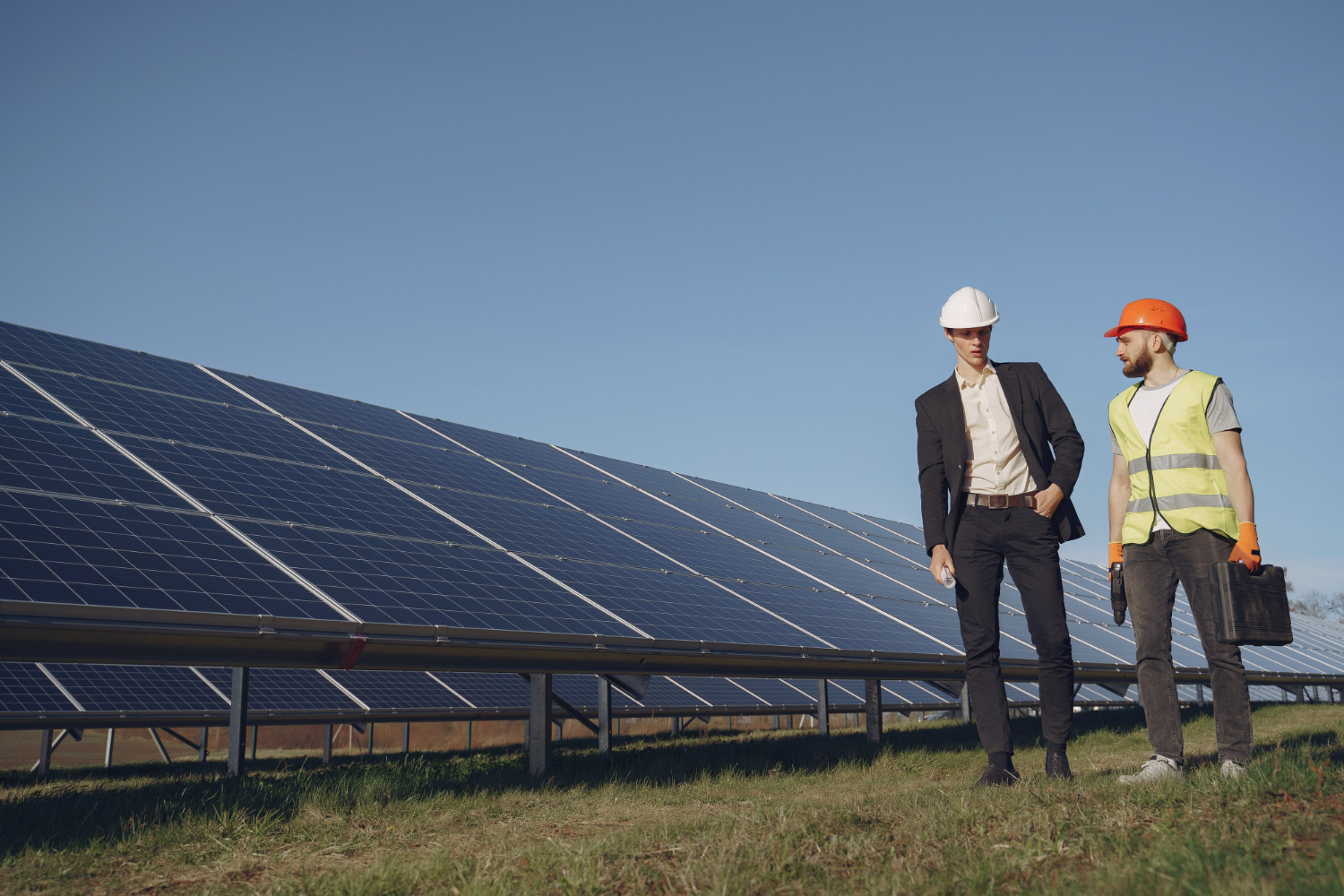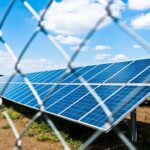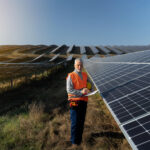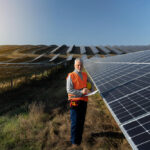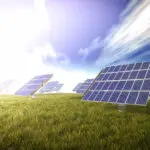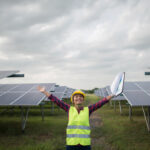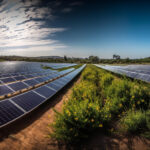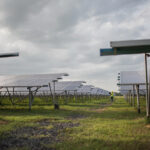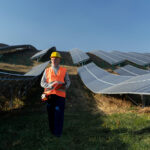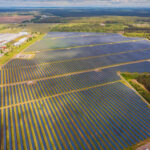As a landowner, you’re likely no stranger to the challenges of managing your property and generating a steady income. But if you’re considering leasing your land to a solar farm, you may be wondering how to get the best deal. With the rise of renewable energy, solar farms are becoming increasingly popular, and developers are eager to secure land to build their projects. But with so many factors at play, it’s easy to get overwhelmed and leave money on the table.
Let’s dive in and explore the world of solar farm lease rates.
Key Factors that Influence the Solar Farm Lease Rates
1. Location, Location, Location
The location of your land is a critical factor in determining solar farm lease rates. Solar farms require a significant amount of sunlight to generate electricity, so areas with high solar irradiance are more valuable. The closer your land is to the equator, the higher the solar irradiance, and the more attractive it becomes to solar developers. Additionally, proximity to existing infrastructure, such as transmission lines and substations, can also impact lease rates.
2. Land Quality and Topography
The quality and topography of your land play a significant role in determining lease rates. Land with the following characteristics is generally more desirable:
- Flat or gently sloping terrain
- Minimal shading from trees or other obstacles
- Well-drained soil to prevent water accumulation
- Access to a reliable water source for cleaning and maintenance
- Minimal environmental or conservation restrictions
Land with these characteristics can command higher lease rates, as it reduces the developer’s construction and maintenance costs.
3. Land Use and Zoning Regulations
Local land use and zoning regulations can significantly impact solar farm lease rates. Areas with favorable zoning laws and minimal regulatory hurdles are more attractive to developers, which can drive up lease rates. Conversely, areas with restrictive zoning laws or environmental regulations may result in lower lease rates.
4. Lease Term and Option Periods
The length of the lease term and option periods can influence lease rates. Longer lease terms (e.g., 20-30 years) provide developers with greater certainty and stability, which can result in higher upfront payments and higher lease rates. Option periods, which allow developers to extend the lease term, can also impact lease rates, as they provide developers with flexibility and reduce their risk.
5. Rent Structure and Payment Terms
The rent structure and payment terms can significantly impact lease rates. Some common rent structures include:
- Fixed rent: A fixed annual payment per acre
- Variable rent: A payment based on the project’s performance (e.g., megawatt-hours produced)
- Hybrid rent: A combination of fixed and variable rent
Developers may also offer different payment terms, such as:
- Upfront payments: A one-time payment at the beginning of the lease term
- Annual payments: Regular payments made throughout the lease term
- Escalating payments: Payments that increase over time
6. Developer’s Project Size and Complexity
The size and complexity of the solar farm project can impact lease rates. Larger projects with more complex infrastructure requirements may command higher lease rates, as developers need to account for increased construction and maintenance costs.
7. Competition and Market Demand
The level of competition and market demand for solar energy in your area can influence lease rates. Areas with high demand for renewable energy and limited land availability may result in higher lease rates, as developers are willing to pay a premium to secure land.
8. Incentives and Tax Credits
Government incentives and tax credits can also impact lease rates. Developers may be willing to pay higher lease rates if they can benefit from tax credits or other incentives that reduce their project costs.
9. Landowner’s Negotiating Power
Finally, the landowner’s negotiating power can influence lease rates. Landowners with multiple offers from different developers or those who are willing to walk away from a deal may be able to negotiate higher lease rates.
Average Solar Farm Lease Rates Per Acre
While lease rates can vary widely depending on the factors mentioned above, here are some general estimates of average solar farm lease rates in the United States:
- Fixed Rent: $500-$1,500 per acre per year
- Variable Rent: $0.01-$0.05 per kilowatt-hour (kWh) produced
- Hybrid Rent: $500-$1,500 per acre per year + $0.01-$0.05 per kWh produced
9 Solid Tips to Lease Your Land for a Solar Farm
Leasing your land to a solar farm can be a lucrative opportunity, but it requires careful consideration and planning. Here are some expert tips to help you navigate the process and ensure a successful partnership:
- Conduct thorough research: Understand the solar industry, local market trends, and the reputation of potential developers. Research the developer’s experience, financial stability, and track record of completing projects on time and within budget. This will help you identify potential red flags and make an informed decision.
- Know your land’s value: Get a professional appraisal to determine your land’s value and negotiate a fair lease rate. Consider factors such as the size, location, and topography of your land, as well as the current market conditions. This will help you determine a fair and competitive lease rate.
- Clearly define lease terms: Specify the lease duration, rent, and any conditions or restrictions. Make sure to include details such as the lease start and end dates, payment terms, and any penalties for non-compliance. This will help prevent misunderstandings and ensure a smooth partnership.
- Ensure environmental protection: Include provisions for environmental protection and restoration. Consider including requirements for habitat preservation, water conservation, and eliminating health risk of solar farms. This will help minimize the environmental impact of the solar farm.
- Monitor and enforce lease terms: Regularly review the lease agreement and ensure the developer is meeting their obligations. Keep records of all correspondence and payments to ensure compliance.
- Work with a qualified attorney: Have a lawyer review the lease agreement to protect your interests. An attorney can help you negotiate a fair lease rate and ensure the agreement is comprehensive and legally binding.
- Understand tax implications: Consult with a tax professional to minimize tax liabilities. Consider the tax implications of leasing your land and seek advice on how to minimize your tax burden.
- Be prepared to negotiate: Be flexible and open to negotiations to reach a mutually beneficial agreement. Consider the developer’s needs and be willing to compromise on certain terms to reach a mutually beneficial agreement.
- Keep records: Maintain detailed records of the lease, including correspondence, payments, and any disputes or issues that arise. This will help you keep track of the partnership and ensure compliance with the lease agreement.
Conclusion
Solar farm lease rates are influenced by a complex array of factors, including location, land quality, lease term, rent structure, and market demand. By understanding these factors, landowners can negotiate more favorable lease agreements and maximize their rental income. As the demand for renewable energy continues to grow, it’s essential to stay informed about the latest trends and developments in the solar industry to make informed decisions about your land

